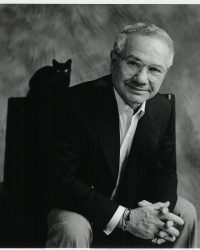I introduced this series of posts by highlighting the evaluation of snowboarding… but there are multiple events within snowboarding and they do not all use the same evaluation strategy. While many of the specific events use a component evaluation strategy (separate judges looking at different parts of the athletes’ performance), the slope style event uses a holistic evaluation strategy, that is, each of six judges gives a grade from 1 – 100 considering a range of features of the run (including things like creativity, difficulty, execution of tricks, landings) but it is the overall impression that is the primary focus.

Yesterday’s first round of slopestyle boarding introduces us to a number of evaluation issues, but let’s focus on one: holistic scoring isn’t transparent and justifying the evaluative claim can be dodgy.
When top ranked Canadian slopestyler Mark McMorris received a score of 89.25 (which put him 7th) his response was: “It’s a judged sport; what can you do?” Canadian team coach Leo Addington repeated this perspective: “It’s a judged sport, and they saw what they saw and they put down what they thought.” He went on: “It’s always hard to tell without putting each run side by side, and the judging has many criteria – execution, amplitude, use of force, variety, progression. All those things are included in their thoughts … and they’re judging the entire run, completely, all those little things that sometimes we miss or don’t miss. It’s really hard to tell unless you study each one in slow motion all the way through.”
Holistic scoring is common in many evaluation contexts (assessments of student writing, lots of program evaluation) and expert judges (like teachers) assert they know a good performance when they see one without necessarily dissecting the performance. But it is more difficult to justify a holistic score and more difficult to challenge its veracity.
Coach Addington’s suggestion that judging each run in slow motion rather than as it is actually occurring is an interesting, although misguided, suggestion. Of course we see things differently in slow mo (that’s what the sports replay is all about) but that isn’t what is being judged in the case of most sports… what is being judged is the actual, authentic performance and even when replays show an error in judgement (let say about a penalty in hockey or a ball/strike in baseball) that judgement is mostly not overturned. So, the justification for a holistic score can’t be that you change the evaluand in order to make it clearer how you arrive at the judgement.
So how can holistic scoring be improved and justified? Slopestyle is a very recent “sport” and so the accumulation of collective expertise about what counts as a quality performance isn’t well formulated and one imagines that over time the quality of the judging will improve… there will be higher levels of agreement among judges and among judges, coaches and athletes. In fact, in the slopestyle instance, the coaches and judges do have relationships that provide for learning from each other. Again, quoting Coach Addington: “We [coaches and judges] can sit down and discuss and say, ‘What did you see, what did we see?’ Maybe we missed something, and we learn from it and that’s how it’s evolving. They learn our perspective and we learn their perspective.” While the media has mistakenly conjured up an image of fraternization between judges and coaches, they misunderstand that evaluations that are fair, transparent and justifiable are necessarily dependent on just such conversations. Holistic scoring approaches can only be better with the development of greater expertise through experience in knowing what that ideal type, the strong overall impression looks like.
NOTE: For the rest of the snowboarding world and media the real story in snowboarding has been US snowboarder Shaun White’s withdrawal from the slopestyle competition.
![]()
![]()
 Follow
Follow





